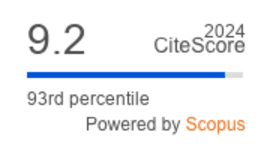Chronic Kidney Disease: Bridging Conventional Therapeutics and Emerging Molecular Innovations
DOI:
https://doi.org/10.36877/pmmb.a0000468Abstract
Chronic kidney disease (CKD) is a significant public health issue worldwide, contributing to a growing burden on healthcare systems and global economies. While conventional management strategies emphasize early detection, prevention, and addressing underlying causes to slow disease progression, CKD is frequently asymptomatic in its early stages. This often results in delayed diagnosis and initiation of treatment only at advanced stages, when therapeutic options are limited and less effective. The shortcomings of current approaches highlight the need for strategies to mitigate disease progression and restore renal function, particularly during the early phases of the disease. This review explores both established and emerging strategies for the effective management of CKD. It begins by examining the etiology and risk factors that contribute to disease onset and progression, followed by a detailed discussion of conventional interventions including lifestyle and dietary modifications, pharmacological treatments, dialysis and kidney transplantation. Additionally, novel therapeutic approaches such as antifibrotic agents, new renin-angiotensin-aldosterone system (RAAS) modulators, stem cell therapy, precision medicine, novel biomarkers, and the role of gut–kidney axis, which show promise in enhancing clinical outcomes are discussed. By identifying the existing challenges and outlining future directions, this review aims to encourage the development of more individualized, proactive, and effective treatment strategies. All in all, it serves as a valuable resource for clinicians and researchers working toward improving early intervention and long-term outcomes for patients at risk of or living with CKD.
Downloads
Published
How to Cite
Issue
Section
License
Copyright (c) 2025 Shao-feng Wang, Jie Gong, Hai-ying Zhang, Hao-jun Dai, Jin-jin Shi, Jing-wen Ling, Ke-qing Dong, Rosnani Hashim

This work is licensed under a Creative Commons Attribution-NonCommercial 4.0 International License.
Author(s) shall retain the copyright of their work and grant the Journal/Publisher right for the first publication with the work simultaneously licensed under:
Creative Commons Attribution-NonCommercial 4.0 International (CC BY-NC 4.0). This license allows for the copying, distribution and transmission of the work, provided the correct attribution of the original creator is stated. Adaptation and remixing are also permitted.

This broad license intends to facilitate free access to, as well as the unrestricted reuse of, original works of all types for non-commercial purposes.
The author(s) permits HH Publisher to publish this article that has not been submitted elsewhere.



.png)

.jpg)
